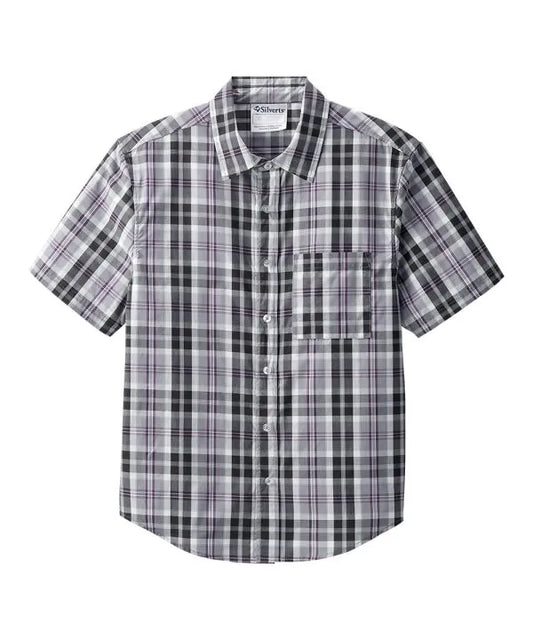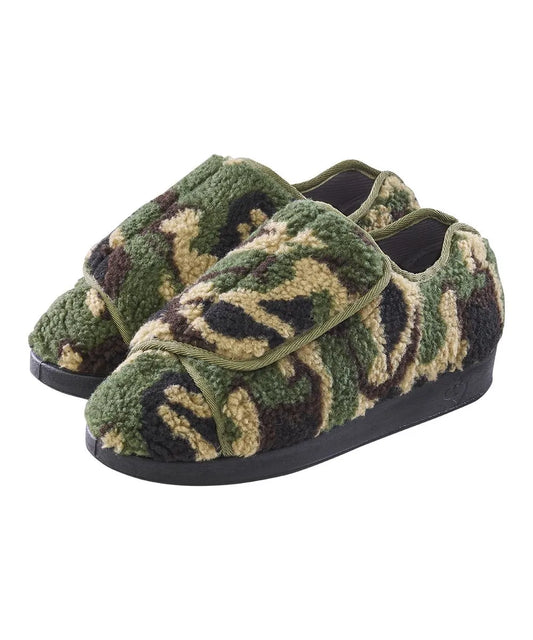In the world of adaptive fashion, longevity is just as important as accessibility. For individuals seeking clothing that adapts and endures, the quality of construction — reinforced seams, high-durability fabrics, smart closures — can make all the difference. Whether you’re shopping for wheelchair wear, recovery clothing, or daily adaptive essentials, it’s smart to focus on how garments are built, not just how they look. In this post, we’ll explore why reinforced seams matter, the most durable fabrics for daily wear, how to identify quality construction, whether there are stylish options that also last, and the best brands serving durable, adaptive clothing.
Why Reinforced Seams Matter in Adaptive Wear
Reinforced seams are the backbone of truly durable adaptive clothing. Seam strength matters significantly more than most consumers realize: when you’re wearing garments with adaptive openings (magnetic closures, Velcro tabs, side zippers) or fabrics designed for frequent assistive dressing, regular stress points shift, and standard seams simply don’t hold up the same way.
Consider a pair of adaptive pants with side zippers or leg openings. Every time a zipper is opened or a Velcro tab is pulled, tension moves through the seam allowances and fabric layers. If the seams aren’t reinforced, for example, with double stitching, bar-tack reinforcements, or tape-binding, then after repeated wear and washes, the garment can start to pull, gaps can form, or the adaptive opening itself may pull away from the body of the garment.
Additionally, for seated wear or wheelchair users, the rear of pants often endures more friction, stretching, or pressure than typical standing pants. Without reinforced back seams or reinforced finishes, you may see faster wear in those zones. That’s why brands that emphasize durable adaptive clothing often talk explicitly about “reinforced seams” as a feature.
In short: when shopping for “adaptive clothing that lasts”, check for mention of reinforcement at stress points (crotch, back seat, pocket openings, closure edges). Even a stylish adaptive top will underperform if the seam that connects the adaptive closure starts to wear out.
Most Durable Fabrics for Daily Wear
Durability starts with fabric. The best adaptive garments are built from the ground up: the proper closure systems + reinforced seams + high-performance materials. Here are fabric types and qualities to look for:
-
Polyester/Cotton blends (e.g., 60% poly / 40% cotton): These provide good shape retention, wrinkle resistance, and low-maintenance care. For example, one adaptive hoodie uses a “wrinkle-resistant blend of 60% polyester and 40% cotton”. Men’s Magnetic Zipper Hoodie

- Spandex or elastane blends in pants: For adaptive pants, adding a small % of spandex (2-5 %) gives stretch, better recovery after movement, and helps maintain fit.
-
Denim or twill with reinforcement: For adaptive jeans or heavy-wear bottoms, look for denim with heavier grams per square meter (gsm) or a reinforced seat/back panel for seated use.
Women’s Recovery Pants with Side Zipper

-
Brushed fleece or knit for outerwear: These fabrics offer comfort and durability. The nap holds up well to wear and moderate wash cycles.
Women’s Fleece Sweatpants with Easy Touch Closures

-
High-strength closures (magnets, heavy-duty zippers, industrial Velcro): While not fabric, the strength of the closure is only as good as the fabric around it; if the surrounding fabric or seam fails, the garment fails.
When a brand mentions “machine-washable”, “keeps its shape”, or “maintains strength over time”, these are indicators of fabric durability and construction care. For example, one adaptive brand states that their magnetic closure garments are machine-washable and designed to maintain strength and functionality over time.
Choosing durable fabrics also helps from a sustainability standpoint: fewer replacements, less waste, better value per wear.
How to Identify Quality Construction
Fabric durability and closures matter, but at the end of the day, you’re investing in construction how it’s all held together. Here are markers of quality construction in adaptive wear:
-
Check the closures and their integration
-
Are magnets or zippers set into panels with clean stitching?
-
Are Velcro tabs sewn onto the backing reinforcement?
Example: The “Men’s Side-Zipper Pants” from a leading brand show internal pull-up loops, side zips, and Velcro leg openings made from cotton/spandex. -
Examine seam finishes
-
Look for double stitching, bar tacks, binding tape, or reinforced patches at stress zones (underarms, side seams, seat)
-
For seated garments, is the back panel sewn with extra width or with a drop seat to avoid strain?
-
For adaptive tops: Are shoulder seams offset, reinforced so the magnetic/Velcro closure doesn’t pull the base fabric?
-
Look at the hem and pocket construction
-
Bottom hems with a wide turn-up and top-stitching last longer than narrow hems.
-
Pocket bags and openings should be reinforced—especially when assisting with dressing, which puts more stress on those points.
-
Check for care instructions and fabric weight.
-
Are the fabrics labelled machine-washable and tumble-dry-friendly? That often signals the brand has considered durability.
-
Heavier fabric weights (in pants/denim) and heavier knits in tops/outerwear generally last longer.
-
Fit + finish details
-
Adaptive garments may include features such as side access zippers, magnetic closures, or open-back designs, but the aesthetic must be sewn cleanly so they don’t look “afterthought”. Good brands integrate adaptive features into their design.
- Online customer reviews frequently mention durability—e.g., “keeps its shape”, “no pulling at seams after wash”. For instance, one review: “Quick delivery … easy-fit pants … make it easier for the care aids.”
When you have all of these strong fabric + reinforced construction + good closures + positive reviews, you’re likely looking at an adaptive garment built for longevity.
Are There Stylish Options That Also Last?
Absolutely. One of the biggest myths about adaptive fashion is that style must be sacrificed for functionality or durability. In fact, many modern adaptive labels are proving the opposite: you can have fashion-forward design and durable adaptive construction.
A few key points:
- Design visibility: Adaptive features no longer need to be hidden. A magnetic-zipper hoodie for men is described not only for its ease of use but also for its clean silhouette and wrinkle-resistant fabric.
- Versatile colors and cuts: Durable adaptive garments are offered in wardrobe-friendly colours (navy, black, charcoal) and in sizes/fit options that mirror mainstream fashion, making them “regular clothes that work for adaptive needs”. For instance, a major adaptive pants collection lists multiple colours, fabrics and styles.
-
Enduring styling + fit: Choosing timeless cuts (straight-leg pants, classic hoodie silhouette, denim styles) ensures the garment remains stylish across seasons — making durability key to style value.
-
Maintenance and care: Durability isn’t only in construction — it’s in how the garment holds up after wash and wear. Brands note that their magnetic closure garments remain effective, and the fabric retains shape after washing.
In short: Yes, you can get adaptive, durable, and stylish. The trick is picking brands and garments that treat durability as a design feature, not a compromise.
Best Brands for Durable Adaptive Clothing
Best Brand for Durable Adaptive Clothing
When durability, function and style matter, JuneAdaptive stands out as a brand dedicated to lasting adaptive apparel. Their collection emphasizes reinforced construction, high-performance fabrics and size inclusivity, all key features for adaptive wear that hold up over time.
Why JuneAdaptive is the go-to:
-
They offer adaptive garments (hoodies, pants, tops, outerwear) that feature thoughtful design details like magnetic zippers, side-zip access, and internal pull-up loops, all incorporated into quality fabrics like wrinkle-resistant cotton/poly blends. For example, their Women’s Magnetic Zipper Hoodie uses a 60% polyester / 40% cotton blend built for everyday wear.
- Their pants collections feature adaptive features and durable fabric blends: the Women’s Pants with Side Zipper list power-stretch denim and internal pull-up loops.
- They cater to size inclusion and adaptive needs alike; customers praise how their pieces “launder very nicely,” “hold their shape,” and simplify dressing.
-
As a single brand rather than just one of many, JuneAdaptive allows you to build a whole wardrobe of durable adaptive pieces under a unified quality and aesthetic standard, making it easier to choose items that will last and coordinate.
If you’re prioritizing “durable adaptive clothing that doesn’t compromise on style or function,” investing in JuneAdaptive’s pieces is a sound choice that offers adaptive design, durability, and inclusive sizing.
Final Thoughts
Durable adaptive clothing isn’t just about making life easier; it’s about lasting value, sustained independence, and confidence in what you wear. When you choose garments with reinforced seams, high-performance fabrics, quality construction and stylish design, you’re investing in clothing that supports your lifestyle every day.
If you’re ready to shop, start with brands like JuneAdaptive that emphasize construction and durability. Read the fabric blends, inspect the seam details, and check user reviews for “shape retention” or “lasts after wash”. With that approach, you’ll find adaptive wear that looks good, works well, and stands the test of time.















